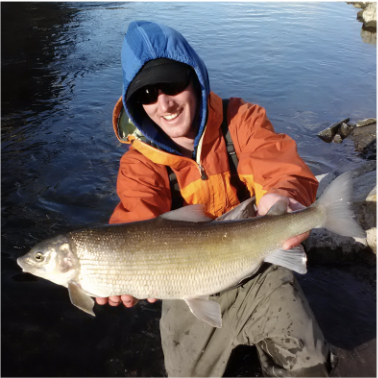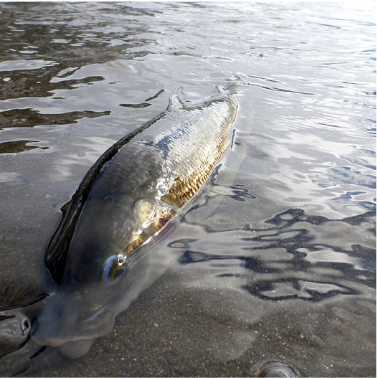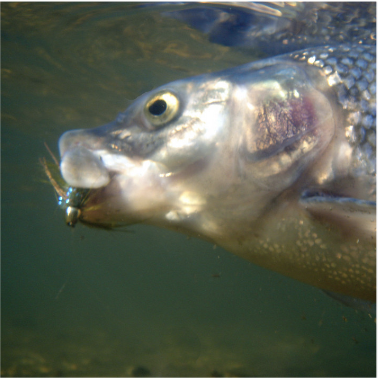The Rocky Mountain Whitefish, native to Montana, is a species of salmonid commonly found alongside trout in cold Montana rivers. The whitefish has one of the largest native ranges of salmonids, and can be found all the way from the Northwest Territories in Canada to Nevada and Utah. Although whitefish can often be mistaken for sucker fish, they have an adipose fin and thus more closely resemble trout. Whitefish are often caught on the fly when anglers are fishing streams and rivers for trout, as their feeding partners are similar to trout. Whitefish are around the same size as trout, averaging 14-20 inches, although whitefish over 25 inches have been caught. They are known to put up a good fight when hooked, so they are enjoyable to catch on a fly rod. Read below to learn more about Rocky Mountain Whitefish.



Rocky Mountain Whitefish are a common companion to trout, and live in just about every large trout river from Nevada to Northern Canada. Thus, it is quite common for an angler to hook up on what they assume is a trout when nymphing and find a whitefish on the end of their line. Whitefish are more commonly caught when nymphing close to or on the bottom of a river, because these fish are bottomfeeders that kick up insects from the soil of the riverbed with their tails. Whitefish are salmonids and similar in shape to trout, but can be identified by their silver bodies, yellow fins and circular mouths.
They spawn in the fall, from October to December on average, although the exact timing may differ depending on the waterway they inhabit; female whitefish can lay up to 4,000 eggs per spawning season! Once hatched from eggs in the spring, whitefish live an average of 7 to 9 years, and usually grow to 14-20 inches in maturity; certain whitefish can grow up to 28 inches, though! Although not as popular as their trout counterparts, whitefish are enjoyed by many anglers, and can be best targeted by drifting a nymph rig all the way to the bottom of a sandy river bottom. They are more common than trout in most places, and have been found in densities as high as 1,257 fish per 100 meters (on the Snake River in Idaho). Unlike many other native western fish, Rocky Mountain Whitefish are not endangered or threatened, although their populations have declined in places because many anglers practice a catch-and-kill policy with whitefish.
Like trout, whitefish need cool and clean water to live in, so the health of their populations is usually a good indicator of the health of the water they inhabit. So, the next time your indicator drops under the water and you pull out a silver salmonid in Montana, know that it is a native Rocky Mountain Whitefish. They may not be as beautiful as trout, but they are a sportfish species that is enjoyed by many anglers all across the Mountain and Pacific Time Zones.